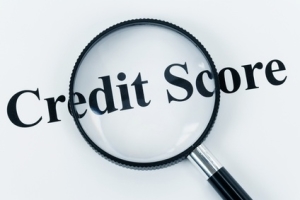 Phil Reece is a friend and a Licensed Loan Originator with Homestead Funding Corp. He recently sent me an article on credit scores and reports that I want to share since many of my clients are seeking to refinance their mortgages and may find this information helpful. For more information Phil can be reached at [email protected]
Phil Reece is a friend and a Licensed Loan Originator with Homestead Funding Corp. He recently sent me an article on credit scores and reports that I want to share since many of my clients are seeking to refinance their mortgages and may find this information helpful. For more information Phil can be reached at [email protected]
Finances – What’s in Your Credit Score?
Do you know what goes into making your credit score? There are 5 main areas of credit that go into your credit report; and here is a breakdown of each of them.
Credit Mix
Credit mix is the different types of credit that are currently under your name. There are two types of debt.
Secured debt describes a debt that is secured by an asset that acts as collateral. Examples of these are a mortgage or an auto loan. Unsecured debt describes a debt where you have an agreement to repay your lender; however, no asset is used as collateral to secure the loan. Examples of these are credit cards, student loans, personal loans, etc.
The most frequently used unsecured debt is credit card debt. Most credit card debt is a type of revolving debt, where your balance can go up or down and your main obligation is to repay the minimum monthly payment. Student loans and some personal loans are also unsecured, however are known as installment loans. This means that the loan is repaid in straight-line periodic installments that do not vary and typically you cannot add to the balance, unlike credit card revolving debt. Having a good mix of both secured and unsecured as well as revolving and installment debt can be beneficial to your credit score.
New Credit
Have you opened or applied for a new account recently? Taking on additional debt may be detrimental to your credit score depending on the type of account you are looking to open. It is best to consult with your Loan Originator before applying for any new credit, making them aware of any credit you have recently applied for or taken out. They can advise you based on your financial situation what your best option is.
Length of Credit
Having a good, long standing credit history with various accounts is always beneficial to your score.
How Much You Owe
It is best to use no more than one third of your available credit on the combined total of your credit cards. That means if you have a total amount of $15,000 in credit among three different cards, you should carry a combined monthly balance of no more than $5,000.
Also, keep in mind that while it is tempting to use just one card (especially if it gives you points for making purchases) and ignore the others; it is not the wisest strategy. It is best to spread your debt evenly among several cards so that no one card balance creeps too close to its credit limit. Try to use no more than half the credit limit of any individual card.
And last but not least…
Payment History
We all know that paying on time is the best way to maintain and build your credit. Having a good standing payment history will always raise your score and keep it where you want it.
Feel free to ask any questions, to comment, or to request more information in the Comments Box below. Also, please forward this blog to anyone you know who would be interested in its topic.
Share with Friends:
Need More Information?
To schedule a free phone or video consultation, complete and submit the form below, email us at [email protected], or call 518-529-5200.





